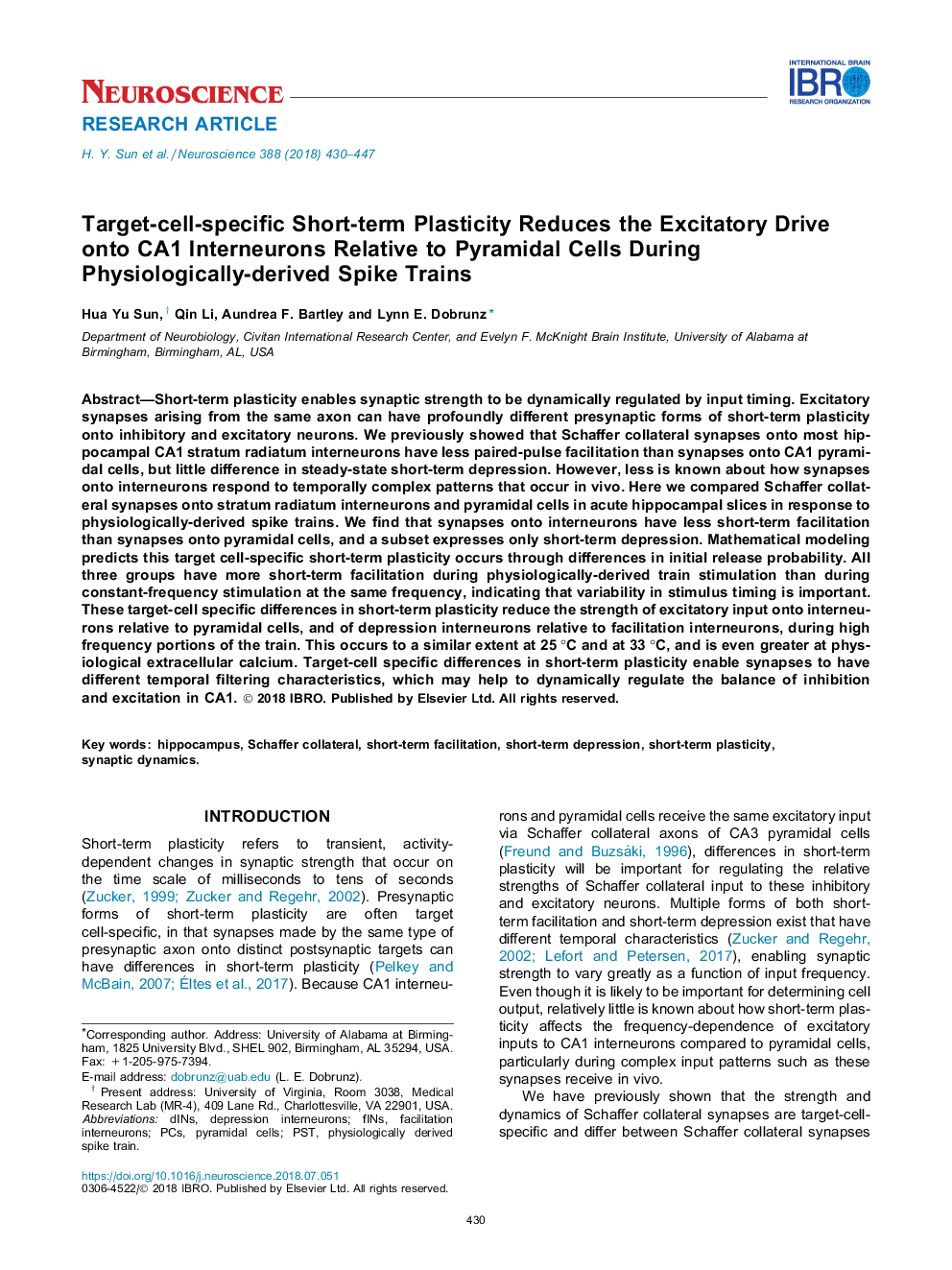| Article ID | Journal | Published Year | Pages | File Type |
|---|---|---|---|---|
| 8840558 | Neuroscience | 2018 | 18 Pages |
Abstract
Short-term plasticity enables synaptic strength to be dynamically regulated by input timing. Excitatory synapses arising from the same axon can have profoundly different presynaptic forms of short-term plasticity onto inhibitory and excitatory neurons. We previously showed that Schaffer collateral synapses onto most hippocampal CA1 stratum radiatum interneurons have less paired-pulse facilitation than synapses onto CA1 pyramidal cells, but little difference in steady-state short-term depression. However, less is known about how synapses onto interneurons respond to temporally complex patterns that occur in vivo. Here we compared Schaffer collateral synapses onto stratum radiatum interneurons and pyramidal cells in acute hippocampal slices in response to physiologically-derived spike trains. We find that synapses onto interneurons have less short-term facilitation than synapses onto pyramidal cells, and a subset expresses only short-term depression. Mathematical modeling predicts this target cell-specific short-term plasticity occurs through differences in initial release probability. All three groups have more short-term facilitation during physiologically-derived train stimulation than during constant-frequency stimulation at the same frequency, indicating that variability in stimulus timing is important. These target-cell specific differences in short-term plasticity reduce the strength of excitatory input onto interneurons relative to pyramidal cells, and of depression interneurons relative to facilitation interneurons, during high frequency portions of the train. This occurs to a similar extent at 25â¯Â°C and at 33â¯Â°C, and is even greater at physiological extracellular calcium. Target-cell specific differences in short-term plasticity enable synapses to have different temporal filtering characteristics, which may help to dynamically regulate the balance of inhibition and excitation in CA1.
Keywords
Related Topics
Life Sciences
Neuroscience
Neuroscience (General)
Authors
Hua Yu Sun, Qin Li, Aundrea F. Bartley, Lynn E. Dobrunz,
